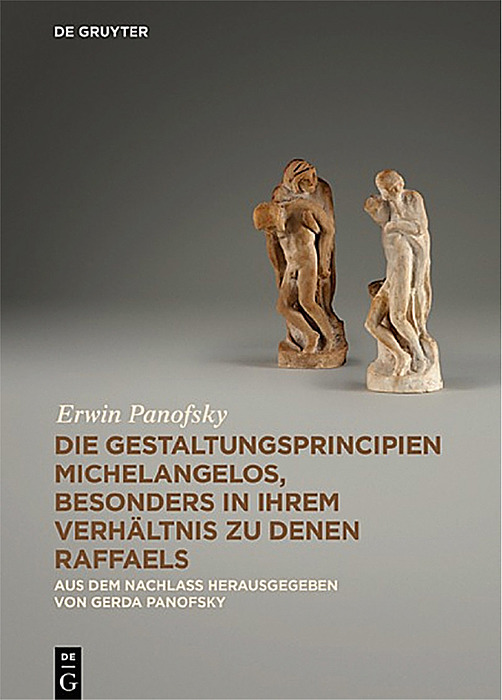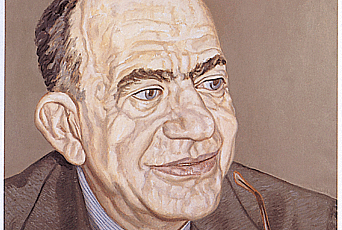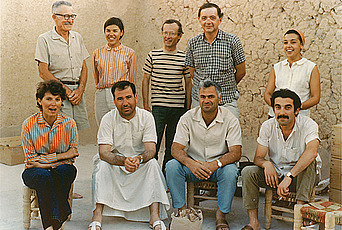Panofsky’s Suppressed Treatise on Michelangelo

In the Spring 2013 Institute Letter, Uta Nitschke-Joseph wrote “A Fortuitous Discovery: An Early Manuscript by Erwin Panofsky Reappears in Munich,” in which she reconstructed the convoluted fate of the lost, and in 2012 re-found, Habilitation thesis of Erwin Panofsky (1892–1968), one of the founding members of the School of Historical Studies and an eminent art historian of the twentieth century. After two years of transcribing, editing, and proofreading the manuscript, I am happy to report that the volume has been published by De Gruyter in October 2014. The release coincides with the centennial of Panofsky’s doctoral dissertation at Albert-Ludwigs-Universität Freiburg in 1914, printed by a predecessor of the same publishing house, and the eightieth anniversary of his forced emigration from Germany in 1934, after which point in time there had been no trace of the some 340 pages anymore (presumably left behind in the off-limits university office). Moreover, 2014 happened to be the 450th anniversary of Michelangelo’s death. An English translation of the book is being prepared by Princeton University Press.
The unfinished text of 1920, modified and enlarged over the following years, is a stylistic analysis of Michelangelo’s (1475–1564) paintings and sculptures, first in comparison with those of his peer Raphael, who, however, was not a sculptor and whom Michelangelo survived by more than four decades, thereby reaching into the periods of the so-called Mannerism and the Early Baroque, which Raphael did not live to see. According to Panofsky, Michelangelo found himself in an artistic conflict between cubic confinement and the dynamic movements of his figures. As his stylistic principles were idiosyncratic and outside the contemporary trends, his œuvre has to be defined against the art of Egypt, antiquity, the Middle Ages, and the Renaissance, as well as the later Baroque. Universal or macro history characterizes also other publications by Panofsky from the 1920s. It is important to note that he never doubted the continuity of Western civilization. While Oswald Spengler, in Der Untergang des Abendlandes (Decline of the West) of 1918, at the end of World War I, proclaimed the downfall of the Occident, Panofsky after his demobilization from the military service in January 1919 devoted himself to the epoch of the Renaissance (the “rebirth” of antiquity), from which lastly Michelangelo could not be extracted.
A hint that this was not an escape from the grim reality, but a conscious protest against the rising endeavors to monopolize Michelangelo, the greatest Italian artist, for the nationalistic and increasingly racist art-historical writing in Germany, is given by the motto of the thesis, which is a quotation from Gotthold Ephraim Lessing (1729–81), the poet of “Nathan the Wise” and one of the foremost representatives of the Enlightenment. In 1920, the same year of his Habilitation at Universität Hamburg, Panofsky conceived also his lecture on “Rembrandt and the Jews” to be presented at the Hochschule für die Wissenschaft des Judentums in Berlin. How appropriate its timing was became soon evident from the fact that in 1922 the notorious study by Hans Günther, Rassenkunde des deutschen Volkes (Racial Science of the German People), would appear in Munich. Perhaps it was not a coincidence that around 1923, as can be proven, Panofsky thoroughly revised his final chapter on Michelangelo with the heading “The Concept of Man with Regard to His Psychic Structure,” in which he derived the tensions of modern man between the spiritual and the animalistic—and ultimately Michelangelo’s split principles—from the teachings of ancient philosophers such as Aristotle and medieval theologians such as Thomas of Aquinas. Michelangelo’s artistic struggles would thus be predestined by a long philosophical and religious tradition, extraneous to nation or race. When Michelangelo toward the end of his life carved the Pietà Rondanini, which seems dematerialized, or when he then wrote poems, which renounced the passions and submitted his soul to the love of God, Panofsky’s interpretation thereof appears influenced by the Ethics of the Jewish philosopher Baruch Spinoza (1632–77), another favorite author of his beside Lessing. The book of the twenty-eight-year-old scholar is no less based on his humanistic education than rooted in his Jewish upbringing.
In determining the Gestaltungsprincipien Michelangelos, Panofsky also liberated them from chauvinistic bias. If after his emigration to the United States he refused to return to his beloved specialty—aside from having lost his manuscript, on which he had labored for so many years—it might have had to do with his disgust of the politicizing of the subject. In one last attempt to stem the tide, he resorted to the Warburgian method in demonstrating the Neoplatonic influence on Michelangelo (in the Mary Flexner Lectures delivered at Bryn Mawr College in 1937). Once again, he summarized how “in Michelangelo’s last works the dualism between the Christian and the classical was solved. But it was a solution by way of surrender.” The final sentence of the last of the Bryn Mawr lectures, in which Panofsky deplores “a gradual disintegration both of Christian faith and classical humanity, the results of which are very much in evidence in the world of today,” throws light on the actuality of the Gestaltungsprincipien Michelangelos written in Germany a decade and a half earlier.
While we might never fully know the inner reasons for Panofsky’s abandonment of his Michelangelo research, the neat break after the emigration in 1934 occurred hardly by chance and surely was related to the ostensible victory of the bigoted Michelangelo cult in Germany. Conversely, the hiding of the manuscript by his former student Ludwig H. Heydenreich (1903–78), among whose Nachlass it happened to be unearthed, must have had to do with repressed feelings of guilt by someone, who while never joining the Party of the Nazis, nevertheless had pursued his career under their regime.
Erwin Panofsky’s book as it is finally published (including the complete facsimile of the original) remains important for the study of Renaissance art and has not lost its relevance; on the contrary, it retrospectively reveals even more its significance for our field than could have been appreciated in the 1920s. It offers not only new insights into Michelangelo’s receptiveness to Greek masterpieces such as the Laokoön or the Torso Belvedere, his emphasis on the one-sided view of statues, his predilection for seated figures, his aversion to portraiture, and much more, but also in over five hundred footnotes evaluates the ongoing scholarly Michelangelo debate of his time. As indicated above, the book concludes with a reading of Michelangelo’s poetry.
Recommended Reading: “A Fortuitous Discovery: An Early Manuscript by Erwin Panofsky Reappears in Munich” by Uta Nitschke-Joseph: https://www.ias.edu/ideas/2013/nitschke-joseph-panofsky


